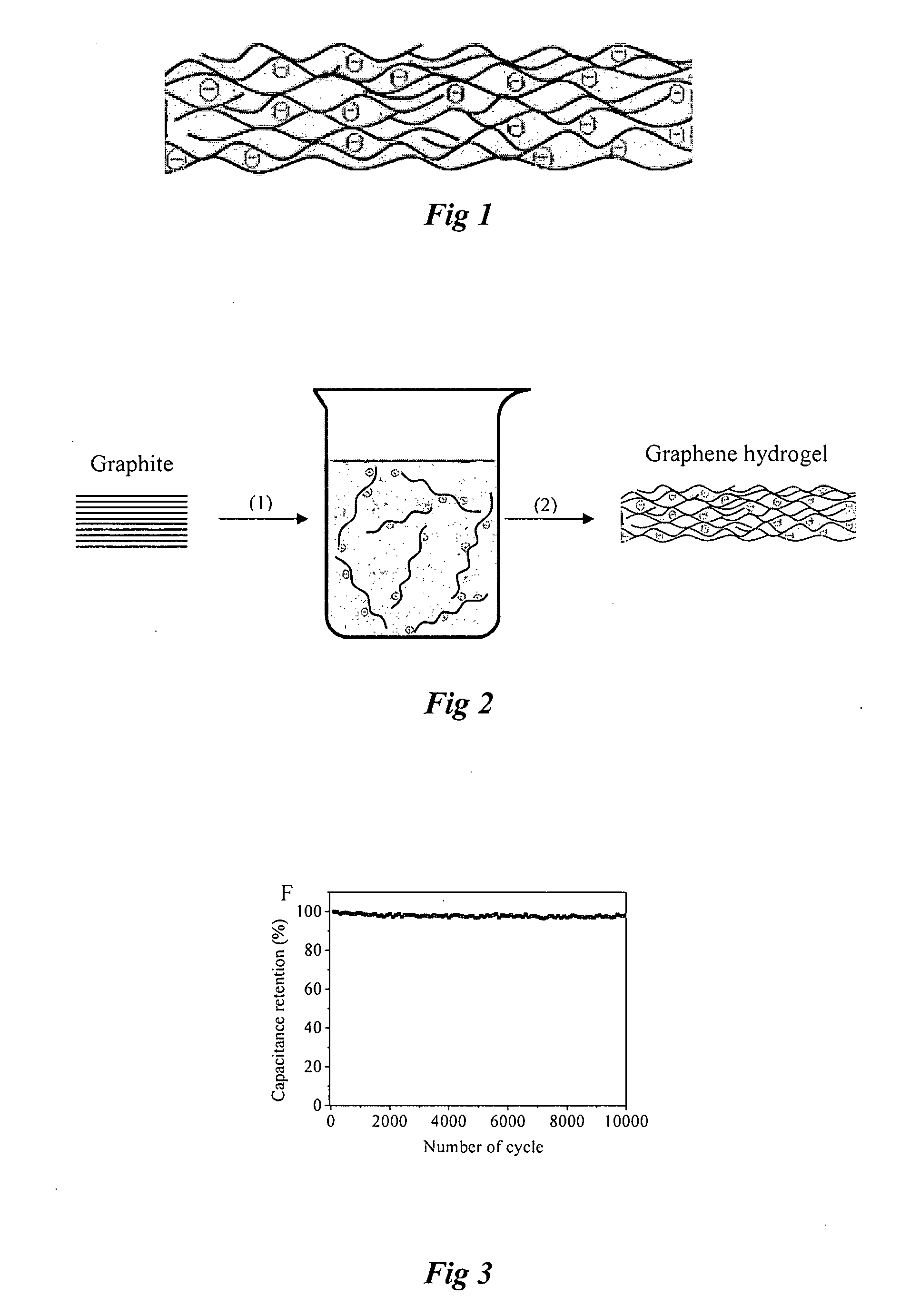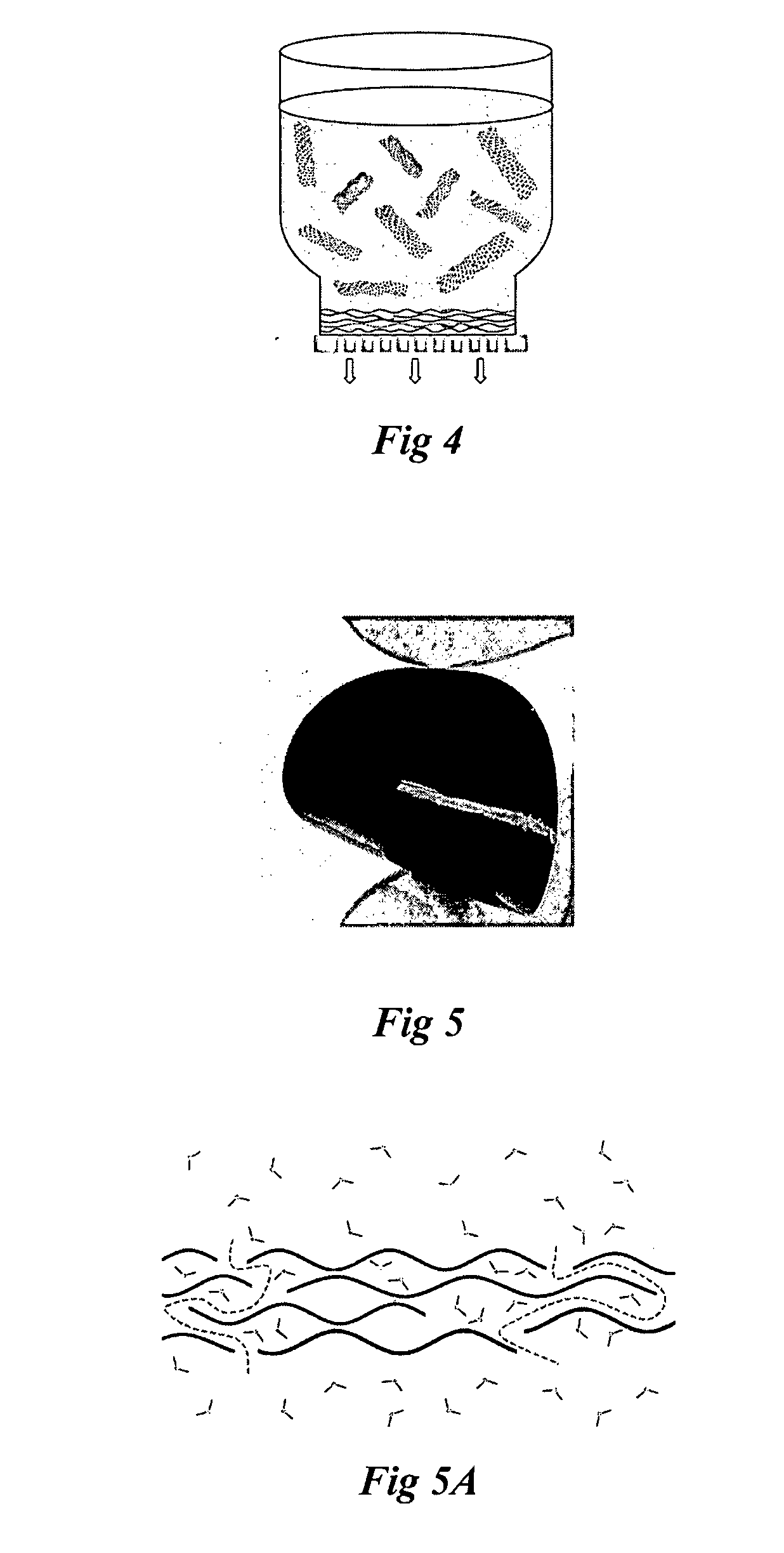Material and applications therefor
a graphene gel and material technology, applied in the field of graphene gel, can solve the problems of large-scale synthesis and processing of bulk-quantity graphene sheets, undesirable presence of foreign stabilisers, and large-scale process of large-scale processable graphene sheets, and achieve greater film flux and inter-sheet spacing or separation.
- Summary
- Abstract
- Description
- Claims
- Application Information
AI Technical Summary
Benefits of technology
Problems solved by technology
Method used
Image
Examples
example 1
Preparation of Graphene Sheets
Example 1A
Preparation Step
[0108]Graphite oxide (GO) was synthesized from natural graphite (SP-1, Bay Carbon) by a modified Hummers method (Hummers, W. S., Offeman, R. E., Preparation of Graphitic Oxide J. Am. Chem. Soc. (1958) 80 1339). As-synthesized graphite oxide was suspended in water to give a brown dispersion, which was subjected to dialysis to completely remove residual salts and acids. Ultrapure Milli-Q® water was used in all experiments. As-purified graphite oxide suspensions were then dispersed in water to create a 0.05 wt % dispersion. Exfoliation of graphite oxide to graphene oxide was achieved by ultrasonication of the dispersion using a Brandson Digital Sonifier (S450D, 500 W, 30% amplitude) for 30 min. The obtained brown dispersion was then subjected to 30 min of centrifugation at 3000 RPM to remove any unexfoliated graphite oxide (usually present in a very small amount) using an Eppendorf 5702 centrifuge with a rotor radius of 14 cm. In ...
example 1b
[0110]During the preparation of the gel, the temperature of the CCG dispersion is elevated. Separate vials of the CCG dispersions, prepared according to Example 1A, were placed in a water bath or an autoclave. The water bath subjected each dispersion to temperatures of 90° C., 95° C. or 100° C. The autoclave subjected the dispersion to 120° C., 150° C. or 180° C. The heat treatments were performed for at least 1 or at least 3 hours.
example 2
Preparation of the Hydrogel
[0111]To prepare a gel film, CCG prepared in Example 1 was dispersed in water to a concentration of 0.37 mg / ml. The liquid comprising graphene sheets dispersed therein was filtered through a mixed cellulose esters filter membrane (47 mm in diameter, 0.05 μm pore size, Millipore) by vacuum suction.
[0112]During the vacuum filtration, a uniform layer of black CCG was immediately formed on the filter membrane. The concentration of the CCG dispersion during the filtration process was studied and it was found that the concentration of CCG remains constant during the filtration-process. The graphs in FIG. 6 show that the filtration took about 150 min for 24 ml of a 0.37 mg / ml solution and 60 min for 24 ml of a 0.18 mg / ml solution. The concentrations of the dispersion solution were monitored using UV-Vis spectroscopy which indicated that he CCG solution does not become concentrated when the water is filtered out, which is slightly different from the formation of g...
PUM
| Property | Measurement | Unit |
|---|---|---|
| Temperature | aaaaa | aaaaa |
| Fraction | aaaaa | aaaaa |
| Fraction | aaaaa | aaaaa |
Abstract
Description
Claims
Application Information
 Login to View More
Login to View More - R&D
- Intellectual Property
- Life Sciences
- Materials
- Tech Scout
- Unparalleled Data Quality
- Higher Quality Content
- 60% Fewer Hallucinations
Browse by: Latest US Patents, China's latest patents, Technical Efficacy Thesaurus, Application Domain, Technology Topic, Popular Technical Reports.
© 2025 PatSnap. All rights reserved.Legal|Privacy policy|Modern Slavery Act Transparency Statement|Sitemap|About US| Contact US: help@patsnap.com



